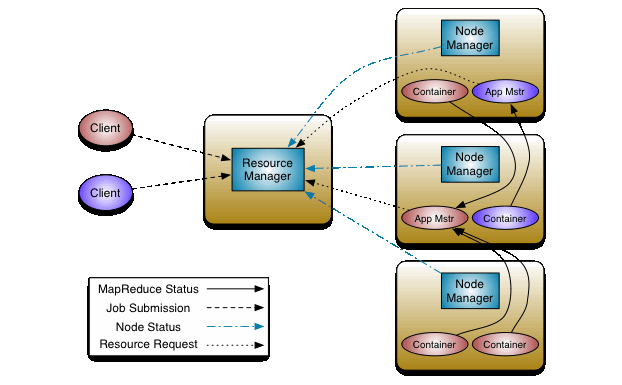HADOOP YARN:
The fundamental idea of YARN is to split up the functionalities of resource management and job scheduling/monitoring into separate daemons.
It uses a Client-Server model.
The idea is to have a global ResourceManager (RM) and per-application ApplicationMaster (AM). An application is either a single job or a DAG of jobs.
The ResourceManager and the NodeManager form the data-computation framework.
The ResourceManager is the ultimate authority that arbitrates resources among all the applications in the system.
The NodeManager is the per-machine framework agent who is responsible for containers, monitoring their resource usage (cpu, memory, disk, network) and reporting the same to the ResourceManager/Scheduler.
The per-application ApplicationMaster is, in effect, a framework specific library and is tasked with negotiating resources from the ResourceManager and working with the NodeManager(s) to execute and monitor the tasks.

The ResourceManager has two main components: Scheduler and ApplicationsManager.
- The Scheduler is responsible for allocating resources to the various running applications subject to familiar constraints of capacities, queues etc. The Scheduler is pure scheduler in the sense that it performs no monitoring or tracking of status for the application. Also, it offers no guarantees about restarting failed tasks either due to application failure or hardware failures. The Scheduler performs its scheduling function based the resource requirements of the applications; it does so based on the abstract notion of a resourceContainerwhich incorporates elements such as memory, cpu, disk, network etc.
The ApplicationsManager is responsible for accepting job-submissions, negotiating the first container for executing the application specific ApplicationMaster and provides the service for restarting the ApplicationMaster container on failure.
YARN knows when a rack dies as it keeps sending signals to the rack.